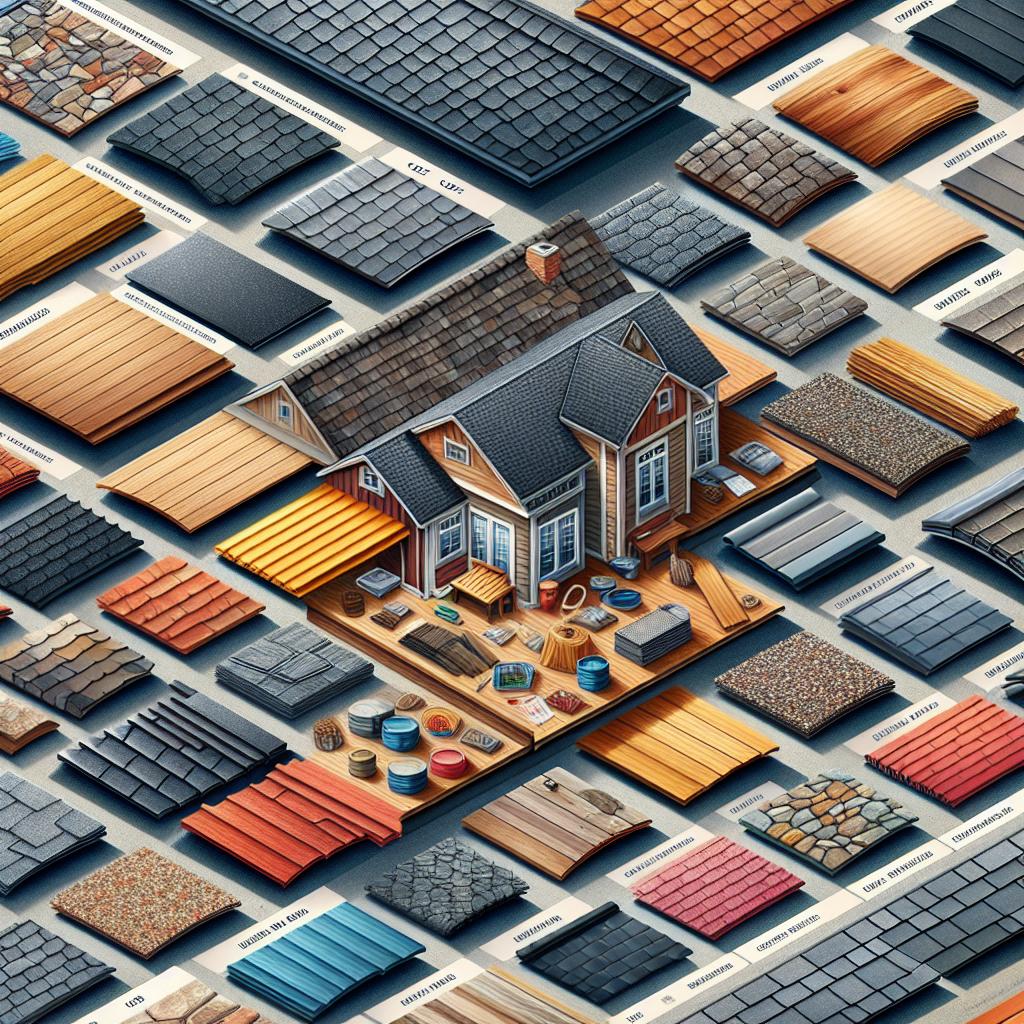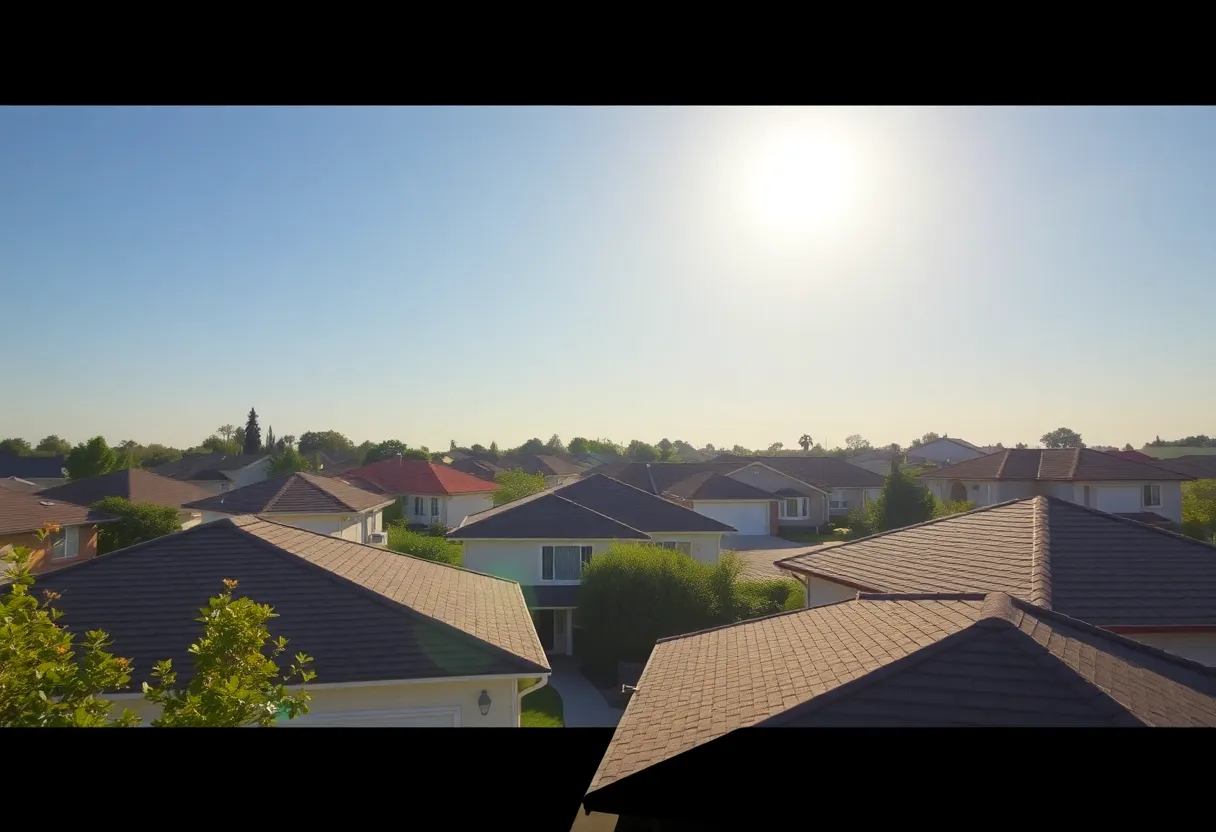How to Choose the Right Roofing Material for Your Home: A Comprehensive Guide
Choosing the right roofing material is a crucial aspect of home design and functionality. The roof serves as a primary barrier against environmental factors and plays a significant role in the overall appearance of your home. Making an informed decision can lead to long-term benefits, from enhanced durability to improved energy efficiency. This guide outlines key factors to consider when selecting the roofing material that best suits your needs.
Understanding Your Options
The roofing materials available today can be categorized into various types, each with its own set of advantages and disadvantages. Here are some of the most popular options:
Asphalt Shingles
Asphalt shingles are among the most commonly used roofing materials, favored for their cost-effectiveness and versatility. They are available in a variety of colors and styles, making it easy to match your home’s aesthetic.
- Durability: Well-maintained asphalt shingles can last between 15 to 30 years.
- Installation: They are relatively easy to install, which can reduce labor costs.
- Energy Efficiency: Reflective options are available to help decrease energy costs.
Metal Roofing
Metal roofing has gained popularity due to its longevity and sustainability. It’s available in various materials such as aluminum, steel, and copper.
- Longevity: Metal roofs can last 40 years or more when maintained correctly.
- Fire Resistant: Metal roofs offer excellent fire resistance and can help lower insurance costs.
- Recyclable: Many metal roofing materials are fully recyclable, making them an eco-friendly choice.
Clay and Concrete Tiles
Clay and concrete tiles are known for their aesthetic appeal and durability. They provide a distinctive look, often associated with Mediterranean or Spanish-style architecture.
- Heavyweight: These tiles are heavier, requiring sturdy structural support.
- Longevity: With proper maintenance, they can last over 50 years.
- Insulation: Excellent insulation properties help with energy efficiency.
Slate Roofing
Slate is a natural stone that is both beautiful and durable. It offers a unique appearance but comes with a higher price tag.
- Durability: Slate roofs can last over a century when properly installed.
- Maintenance: Minimal maintenance is required, although repairs can be costly.
- Water Resistant: Slate is a non-porous material that resists moisture.
Key Factors to Consider
Selecting roofing material requires a thorough examination of various factors that could influence your decision and investment. Here are the essential considerations:
Climate Considerations
The local climate plays a significant role in determining the best roofing material for your home. For example:
- Snowy Regions: Metal and slate roofing may be ideal for areas with heavy snowfall due to their durability and snow-shedding capability.
- Tropical Climates: Consider tiles or metal roofs to withstand heat and moisture.
- Windy Areas: Opt for roofing materials that can endure severe weather conditions, such as asphalt shingles with a higher wind rating.
Cost Implications
The initial cost of roofing material is a significant consideration. While some materials may be less expensive upfront, they may incur higher maintenance and replacement costs in the long run.
- Asphalt shingles: Generally the most affordable option.
- Metal roofing: Higher initial investment but fewer maintenance costs.
- Slate and tile: Substantial upfront costs, but long lifespan can mitigate financial burden over time.
Energy Efficiency
Energy-efficient roofing materials can significantly reduce cooling and heating costs. Look for materials with high solar reflectance for warmer climates and effective insulation properties for colder regions.
Reflective Coatings
Adding reflective coatings to your roofing material can enhance energy efficiency, particularly in sunlight exposure areas. Choose materials that come with Energy Star ratings for better performance.
Aesthetic Appeal
The visual impact of your roofing material can enhance or diminish the overall curb appeal of your home. Take into account:
- Neighborhood Compatibility: Choose a roofing style that aligns with surrounding homes.
- Color Choices: Various colors can dramatically alter the appearance of your roof and your home.
Evaluating Installation and Maintenance
Not all roofing materials are created equal when it comes to installation and maintenance. Consider how easily a material can be installed and how much upkeep it requires.
Installer Expertise
Ensure that you select a contractor who is experienced in installing your chosen roofing material. Incorrect installation can lead to premature failure and costly repairs.
Long-term Maintenance
Some materials require regular inspections and maintenance, while others are virtually maintenance-free. For example, asphalt shingles may need periodic replacement after significant weather events, whereas metal or slate roofing often requires minimal intervention.
Assessing Environmental Impact
Choosing sustainable roofing materials can contribute positively to the environment. Assess the following:
Recyclability
Opt for roofing materials that can be recycled at the end of their life. Metal roofing generally scores well in this aspect, while slate is another eco-friendly option.
Energy Efficiency Metrics
Consider materials that are made from renewable resources or have a lower energy consumption footprint in their manufacturing process.
Making the Final Decision
Upon evaluating your options based on durability, cost, climate, aesthetic appeal, maintenance, and environmental impact, gather quotes from reputable contractors. It’s wise to obtain multiple quotes to compare not only pricing but also expertise and customer service.
Review Local Building Codes
Check your local building codes or homeowners’ association guidelines to ensure compliance with the selected roofing material. Failing to do so could result in fines or require costly adjustments.
Consider Resale Value
Think about how your roofing choice will affect your home’s resale value. High-quality, attractive roofing materials can be a selling point, enhancing your property’s marketability.
Conclusion
Choosing the right roofing material can seem daunting, but by understanding your options and evaluating your needs against key factors, you can make a choice you will be satisfied with for years to come. The roof is not just a functional element of your home; it significantly influences aesthetics and energy efficiency. A well-chosen roofing material not only protects your investment but can also enhance your home’s overall value.
By following this comprehensive guide, you will equip yourself with the knowledge necessary to make an informed decision. Whether you prioritize durability, cost, energy efficiency, or aesthetic appeal, understanding your unique requirements and matching them to the practical qualities of various materials will ensure that your roofing choice meets your long-term needs.






